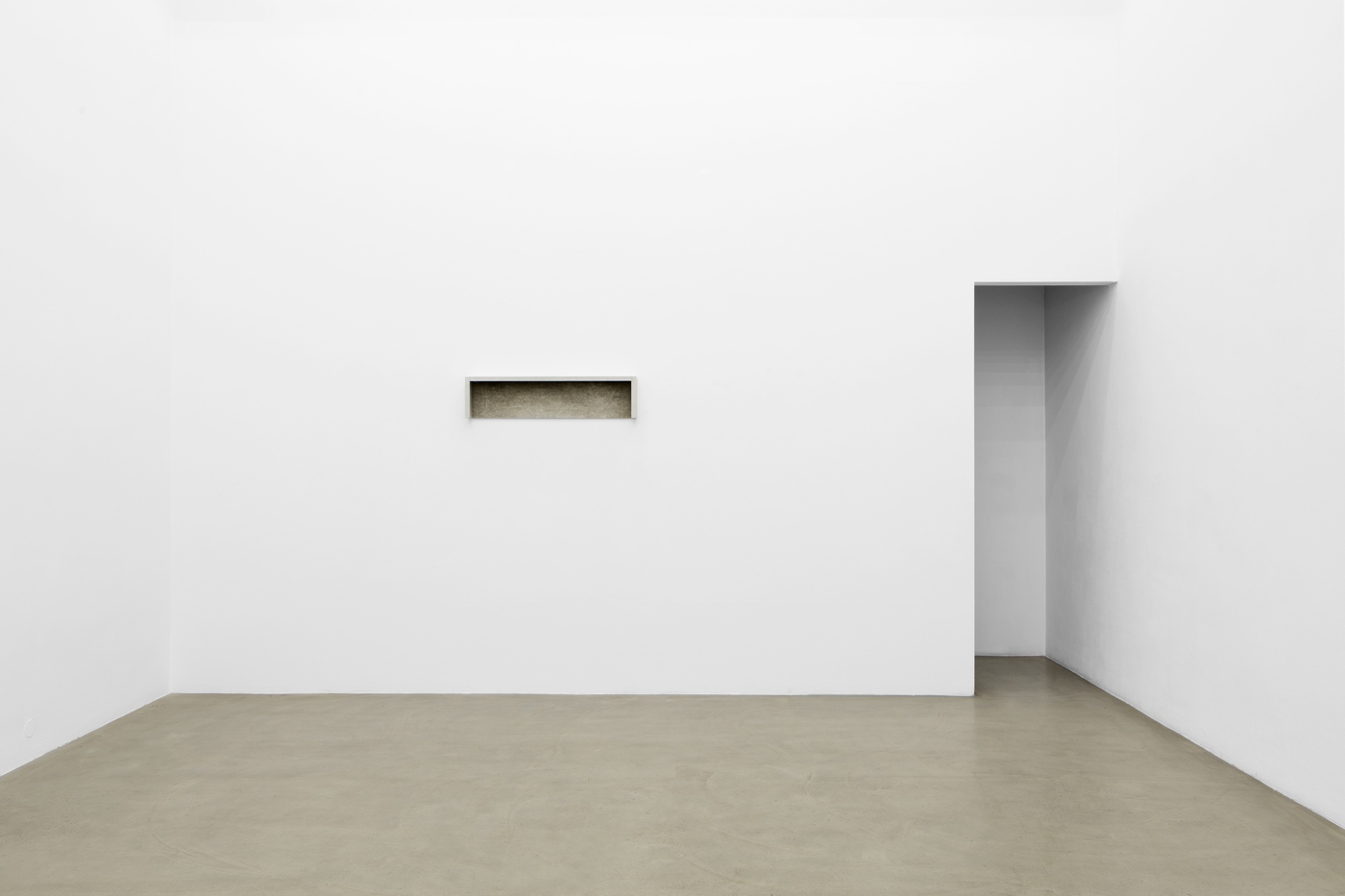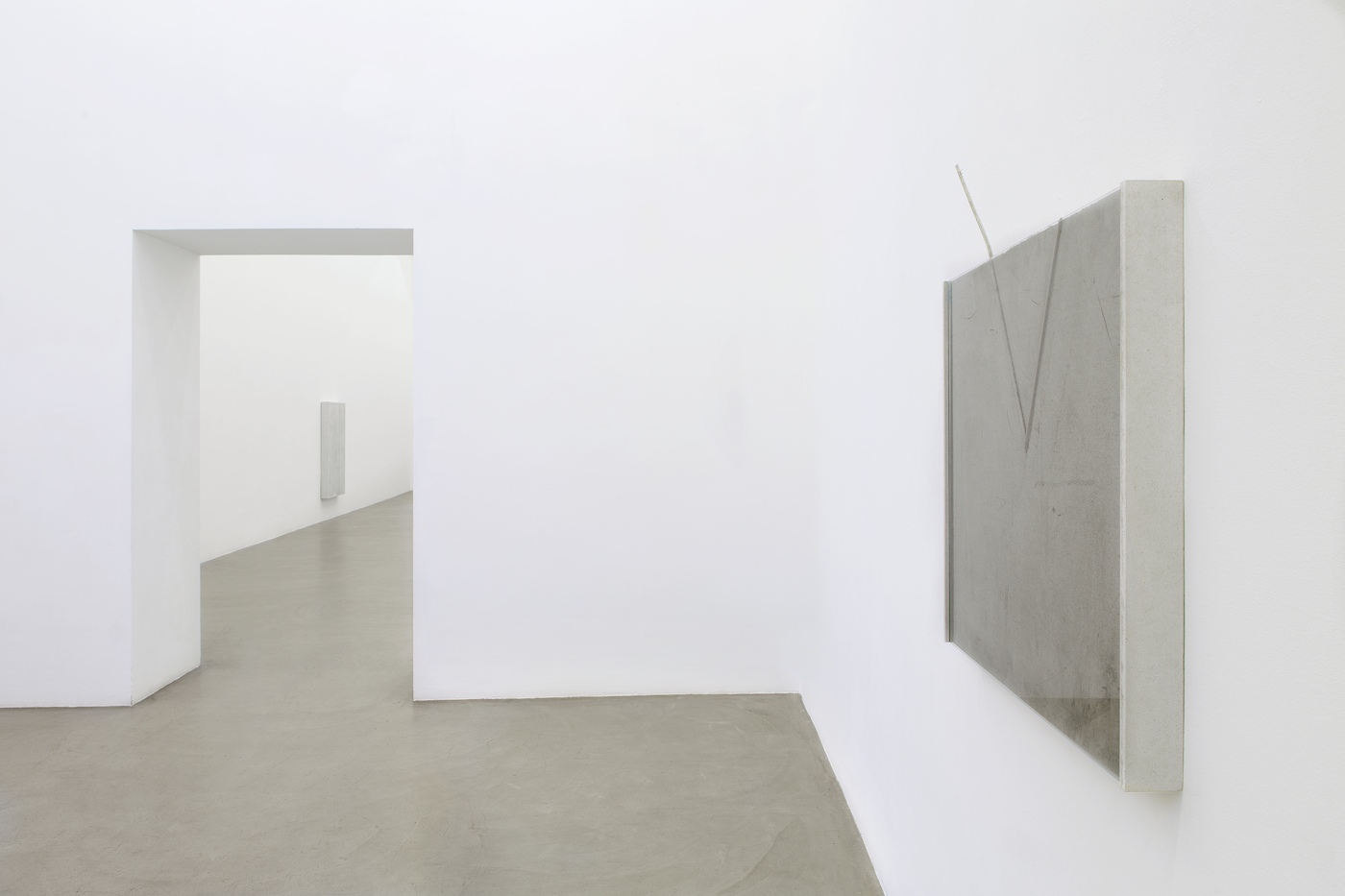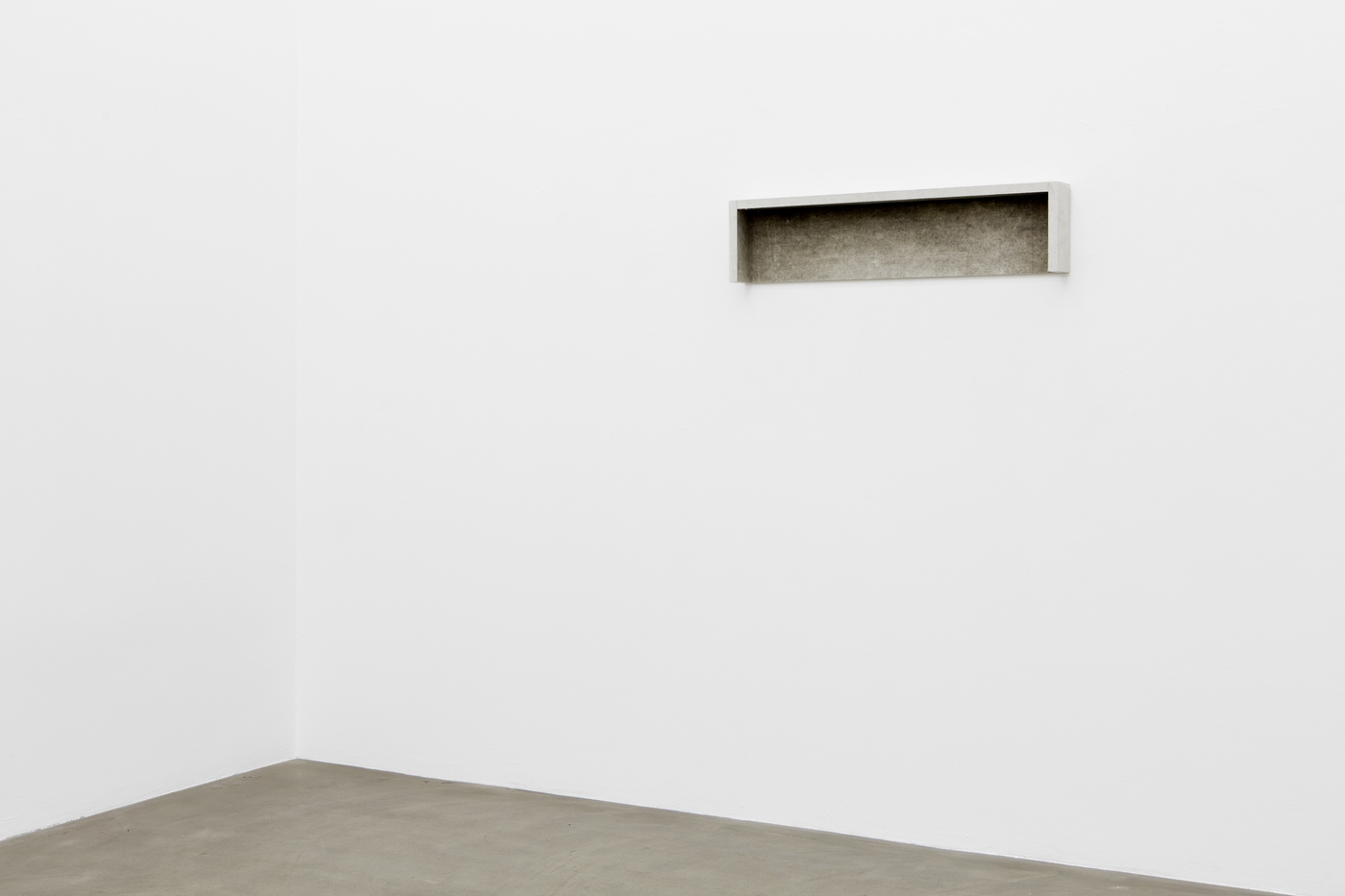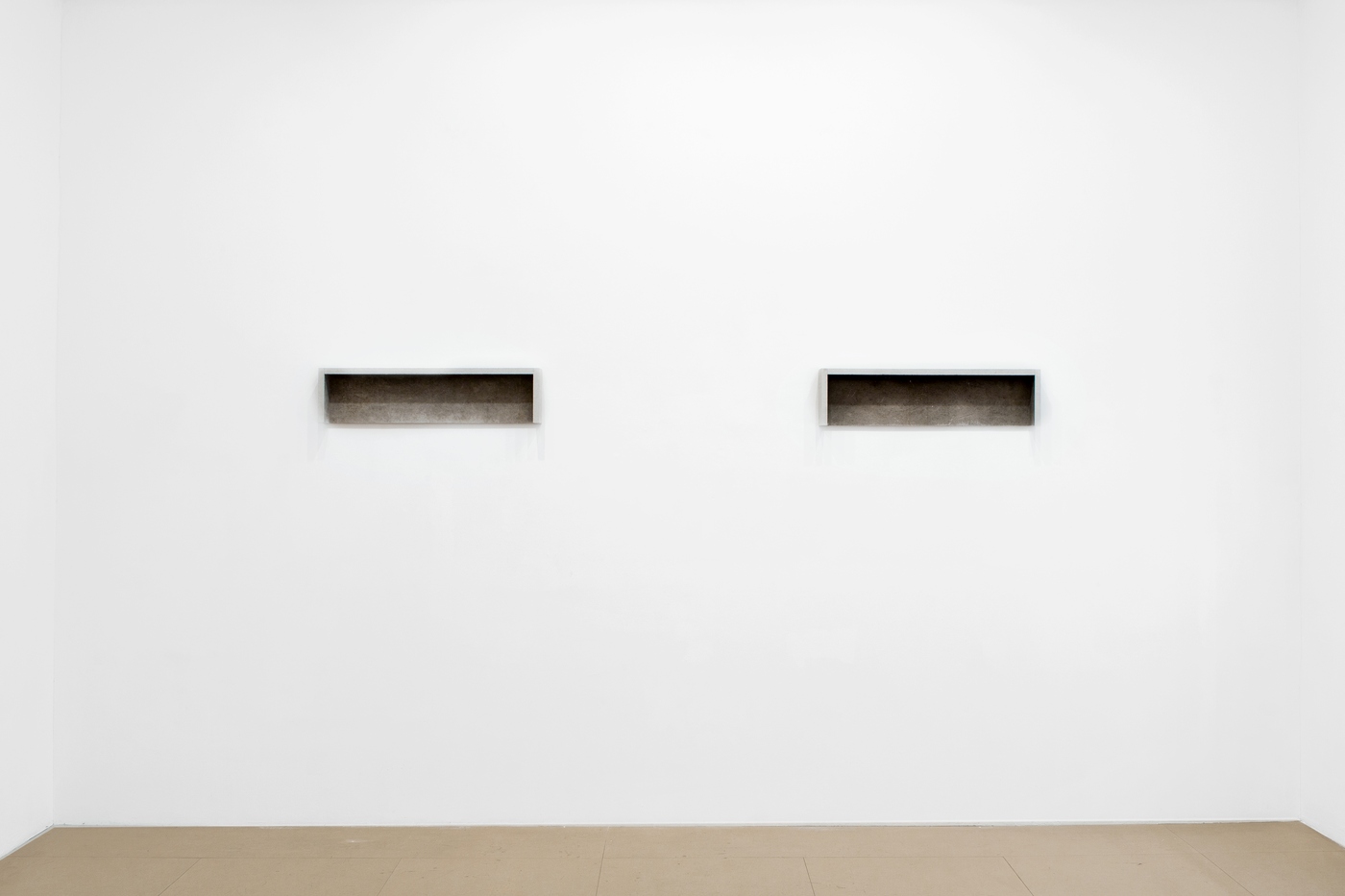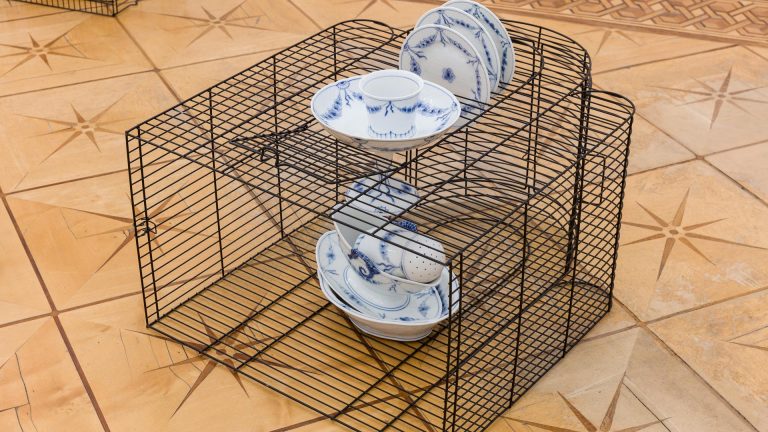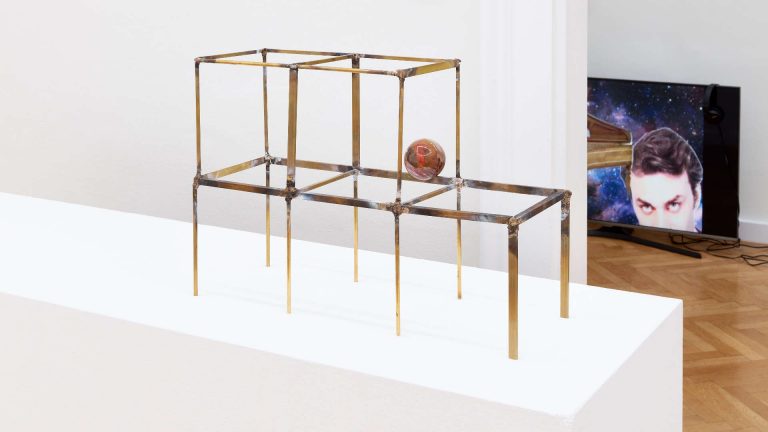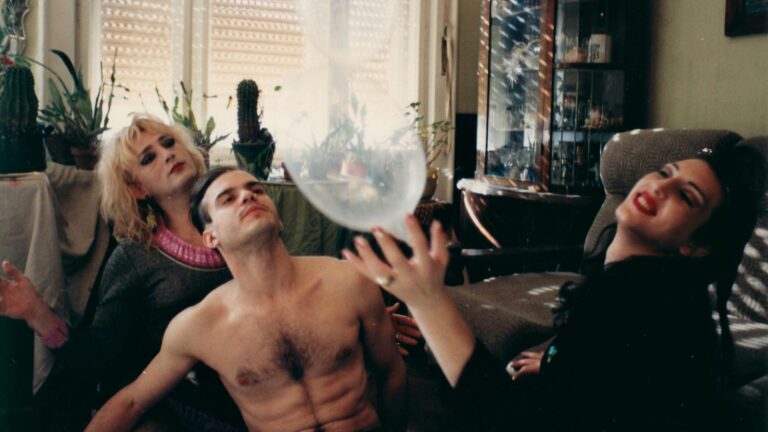Artist: Anita Leisz
Venue: Meyer Kainer, Vienna, Austria
Date: March 9 – April 16, 2016
Photography: all images copyright and courtesy of the artist and Meyer Kainer, Vienna
Anita Leisz does not use plain chipboard, but selects a more particular type of material, namely melamine-faced chipboard. She does not deploy these massproduced construction materials just as she bought them, instead treating them carefully – one might almost say with an obsessive precision – which is in contrast to the approach adopted by Frank Stella, who applied paint to the canvas straight out of the tube. Even the minute differences arising from the material’s serial production are taken into account. A further distinction is how the boards are connected – either with a miter joint or lap joint, glued or screwed together. The traces left on the surfaces after they have been worked are left as is, or removed until the gray-white surface has assumed its intended appearance.
The hallmark of the works is their distinguished presence, which creates a rapprochement between the rational, clearly structured forms and Minimalism. That does not signify that it is also possible to grasp the objects in one single glance in the spirit of Minimal Art. On the contrary, the works open up seccessively as the viewer seeks to comprehend the decisions taken and the subtle differentiations.
It is striking here that all the decisions to opt for a particular form pursue an inner logic that is never rooted exclusively in aesthetic considerations. As Anita Leisz has explained, she is interested not in the forms but in the formats, in other words, in the relationship of proportions, and questions such as how volume, surface and space, interior and exterior, abstraction and representation, perception and the perceived can be related to each other.
That means that when Anita Leisz calls certain sculptures „gentle objects“ rather than „specific objects“, this refers not only to the nature of the works per se but also to how they relate to other pieces. They may, für example, open up a vista in an exhibition. Leisz’s objects act, they return our gaze. Will Benedict describes how sometimes one can find something akin to comic book characters as in „when a wall becomes a cat and a portrait of a cat a door.“
Her works are gentle or aggressive, reserved or assertive. In any event, the depict social behaviour in a certain sense, reflecting social spaces, actions, and encounters.
The works trigger an abundance of associations, which must always be linked back to the respective object. Just when you reach the point of interpreting them in psychological terms – more or less as if you were to keep on wondering as you read a literary text how much the characters, irrespecitve of how constructed they appear, actually have to do with the author – this notion is overturned once more and you see only references in the objects, alluding to sculpture, to architecture, to furniture.
Anette Freudenberger, Much Lies in the Subtleties. In: Sculptural Acts, Munich 2012, p.93-95.



